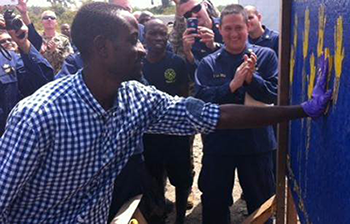FDA Medical Countermeasures Initiative Update

Zika Virus Diagnostic Test Development & Reference Materials

There are no commercially available diagnostic tests cleared by FDA for the detection of Zika virus. FDA encourages commercial diagnostic developers and researchers developing laboratory developed tests (LDTs) for Zika virus to submit an Emergency Use Authorization (EUA) request. FDA is working interactively with developers to support such requests, and has rapidly granted EUAs for several in vitro diagnostic (IVD) devices.
To support fulfillment of an EUA condition of authorization to assess traceability, FDA has created the FDA Zika Virus Reference Materials for NAT-based IVD devices, available upon request to Zika device developers who have a pre-EUA submission with the agency and have established the analytical and clinical performance of their assay.
To request the FDA Zika Virus Reference Materials for NAT-based IVD devices, email CDRH-ZIKA-Templates@fda.hhs.
Related information
- Infographic on Zika diagnostic test development (PDF, 120 KB)
- From CDC MMWR - Interim Guidance for Interpretation of Zika Virus Antibody Test Results(May 31, 2016)
- HHS Summit to Accelerate Zika Diagnostics Development (July 15, 2016, Washington, DC)
Images: Top - FDA has developed a reference panel, to help diagnostic test manufacturers ensure that tests to detect Zika virus are accurate and reliable, with a digitally-colorized transmission electron micrograph (TEM) of Zika virus. (TEM image credit: CDC/Cynthia Goldsmith) - Side - Thumbnail image of FDA Zika Virus Reference Materials infographic (click the picture to view the full-size PDF)
Survivor Studies: Better Understanding Ebola's After-Effects to Help Find New Treatments
MCMi Regulatory Science Feature

The West African Ebola epidemic of 2014-2015 was the largest-ever Ebola outbreak, claiming more than 11,000 human lives, and forever altering many thousands more. Unlike previous Ebola outbreaks, however, a large number of Ebola patients survived this epidemic.
For some, surviving wasn’t the end of their challenges. Many of the recent epidemic’s 16,000+ Ebola survivors suffer from chronic, long-term health problems including headaches, joint pain, and eye problems caused by Ebola. Scientists do not yet fully understand what causes these after-effects.
FDA and partners are conducting studies in West Africa to better understand how Ebola affects patients who have recovered, and to learn how to more effectively treat these patients’ chronic health problems.
For some, surviving wasn’t the end of their challenges. Many of the recent epidemic’s 16,000+ Ebola survivors suffer from chronic, long-term health problems including headaches, joint pain, and eye problems caused by Ebola. Scientists do not yet fully understand what causes these after-effects.
FDA and partners are conducting studies in West Africa to better understand how Ebola affects patients who have recovered, and to learn how to more effectively treat these patients’ chronic health problems.
Related information
- MCMi extramural research funding and current projects
- FDA BAA (Broad Agency Announcement for the Advanced Research and Development of Regulatory Science, accepting applications through February 22, 2017)
Image: U.S. Public Health Service officers celebrate as a Liberian man adds his handprint to a “survivors’ wall.” Each patient who overcame Ebola after treatment at the USPHS mobile hospital outside Monrovia was given a set of clothes and essentials and invited to mark their recovery with a handprint. (Photo: FDA)
New Ebola Emergency Use Authorization
On May 26, 2016, FDA issued an Emergency Use Authorization (EUA) of the Idylla Rapid Ebola Virus Triage Test for the presumptive detection of Ebola Zaire virus (detected in the West Africa outbreak in 2014) on the Idylla Instrument System in EDTA venous whole blood specimens from individuals with signs and symptoms of Ebola virus infection in conjunction with epidemiological risk factors.






















.png)











No hay comentarios:
Publicar un comentario